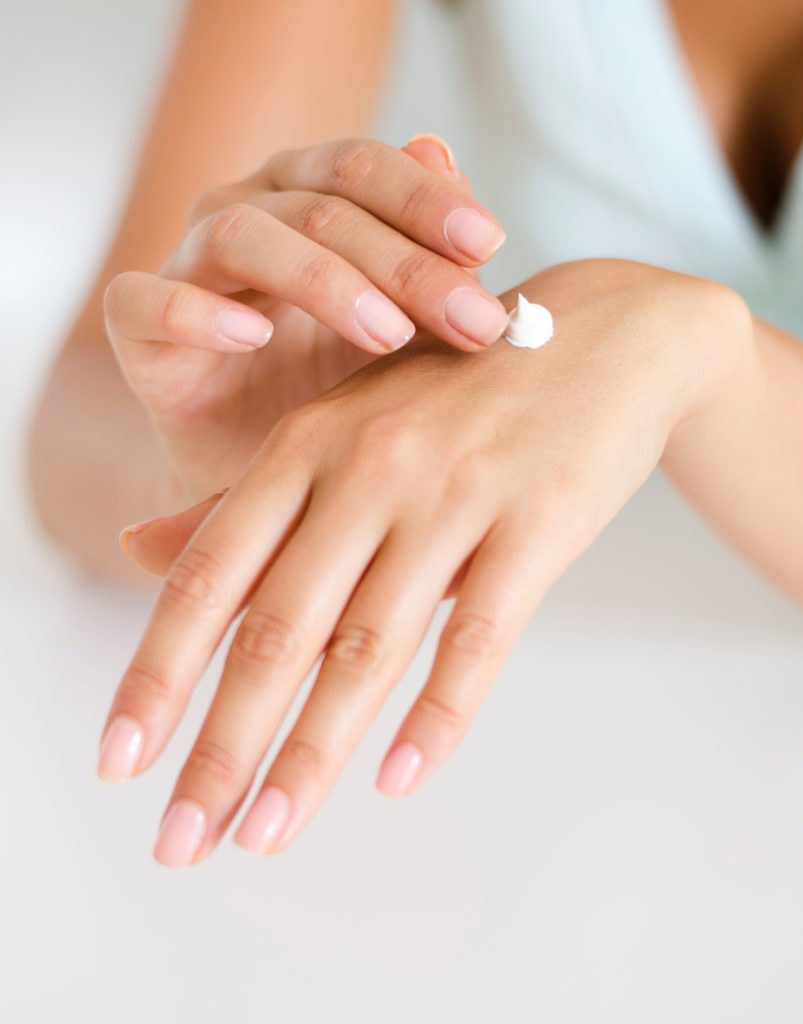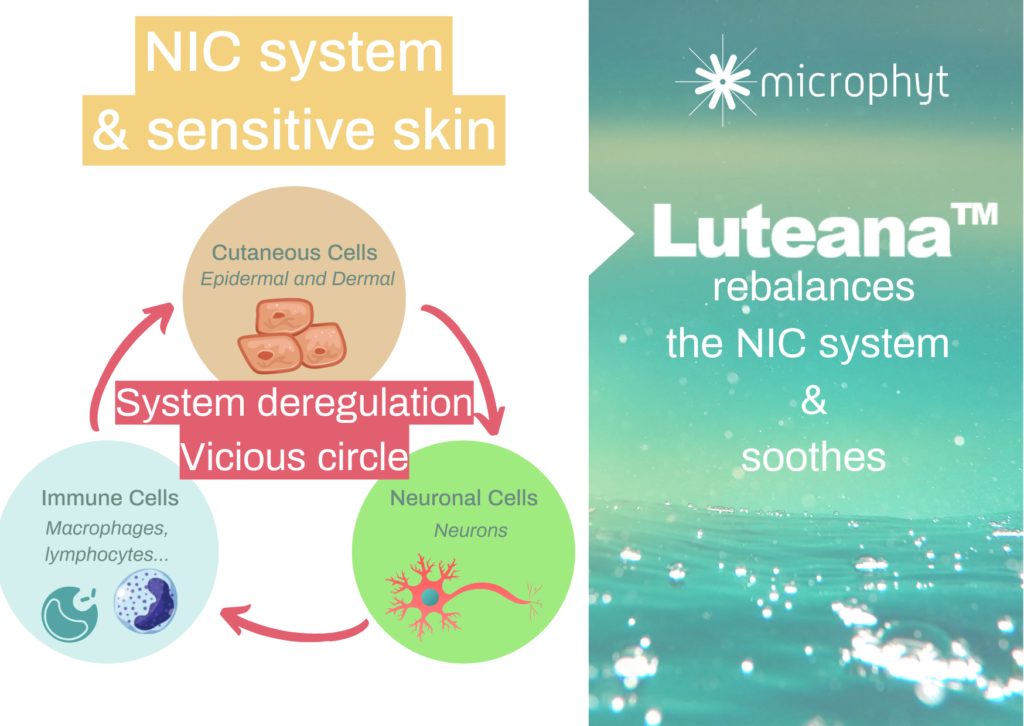

Sensitive skin: neuro-immuno-cutaneous system paves the way for new solutions
June 14, 2022

Sensitive skin can cause dryness, redness, tightness and other unpleasant symptoms that have a negative impact on our well-being. But new solutions now exist for this problem that affects half the population. Research and the emergence of neurocosmetics have demonstrated how the neuro-immuno-cutaneous (NIC) system can disrupt the skin’s balance. We take a closer look.
NIC – these three little letters point to the existence of multiple interactions between skin cells (keratinocytes, melanocytes and fibroblasts), nerve fibres and immune cells. Scientists only discovered the neuro-immuno-cutaneous system very recently[1]. The NIC system perceives various stimuli and transmits them to the central nervous system. These exchanges take place via cell-cell contacts and biological mediators (chemical signals that carry information between cells). The barrier and sensory functions of the skin are under the influence of this system, meaning that if the NIC network is disrupted, the skin becomes sensitive and expresses this through various chemical signals that have a direct impact on skin well-being, resulting in symptoms such as itching, redness, tightness and dryness.
Understanding the NIC network to restore the balance of sensitive skin
If the NIC network encounters physical, chemical or emotional stimuli, it can create an imbalance, resulting in overproduction of neuromediators. The network is unbalanced at all levels, causing it to overreact and get caught in a self-reinforcing vicious circle, leading to over-sensitive skin. So if we are to improve the health of sensitive skin, we need to maintain a balanced NIC network.
If the NIC network encounters physical, chemical or emotional stimuli, it can create an imbalance, resulting in overproduction of neuromediators. The network is unbalanced at all levels, causing it to overreact and get caught in a self-reinforcing vicious circle, leading to over-sensitive skin. So if we are to improve the health of sensitive skin, we need to maintain a balanced NIC network.
Luteana, the new comprehensive solution
Microphyt, which specialises in harnessing the power of microalgae, has developed Luteana, a comprehensive solution capable of restoring the balance of the NIC system. This oily extract derived from a golden Tahitian microalgae is a concentrated blend of powerful active ingredients, especially fucoxanthin, which regulates the NIC system and soothes the skin. The demonstrated neuroprotective and anti-inflammatory benefits[2] of fucoxanthin, a pigment that can only be found in the marine world, have a lasting natural effect on atopic skin.
To find out more about our new active ingredient, click here.
Neurocosmetics: the link between beauty and well-being
Since the 1990s, neurocosmetics has given rise to extensive research both at universities and by brands that manufacture active ingredients or cosmetic end products. In 2000, Laurent Misery, a dermatology professor and director of the neuroscience laboratory at the University of Western Brittany, defined neurocosmetics as the understanding of skin innervation and the observation of products applied to the skin that have an impact on the cutaneous nervous system or a general effect on skin mediators. This field demonstrates the crucial links between beauty and well-being, currently the focus of much interest among industry stakeholders.

[1] Debroas et al., Interactions neuro-immunes dans la peau : Un lien entre douleur et immunité, Med Sci (Paris),2018 , Vol. 34, N° 5 ; p. 432-438
Vidal et al., The importance of the neuro‐immuno‐cutaneous system on human skin equivalent design. Cell Prolif. 2019; 52:e12677
[2] Zaho et al., Anti-Neuroinflammatory Effects of Fucoxanthin via Inhibition of Akt/NF-κB and MAPKs/AP-1 Pathways and Activation of PKA/CREB Pathway in Lipopolysaccharide-Activated BV-2 Microglial Cells. Neurochem Res 42, 667–677 (2017); 2. Natsume et al., Fucoxanthin Ameliorates Atopic Dermatitis Symptoms by Regulating Keratinocytes and Regulatory Innate Lymphoid Cells. Int. J. Mol. Sci. 2020, 21, 2180; 3. Tavares et al., 2020




